Ellen White and Adventist Healthcare—Ahead of Their Time
Medical care in the mid-1800s was primitive, to say the least. Basic concepts we take for granted—such as proper handwashing or recognizing the dangers of bloodletting—were nonexistent. And doctors often had little more than nine months of training!
But Seventh-day Adventists would help raise the standard in healthcare.
God inspired Ellen G. White (1827–1915), one of Adventism’s founders, with a health message that was far ahead of its time—personal hygiene, a healthy diet, the lifestyle-disease connection, and more. She urged the Church to begin its own health clinics, called sanitariums, to put these teachings into practice.
Adventist health institutions today carry the legacy that Ellen White left behind. Let’s get a glimpse of that through the answers to these questions:
Why does the Adventist Church have health care institutions?
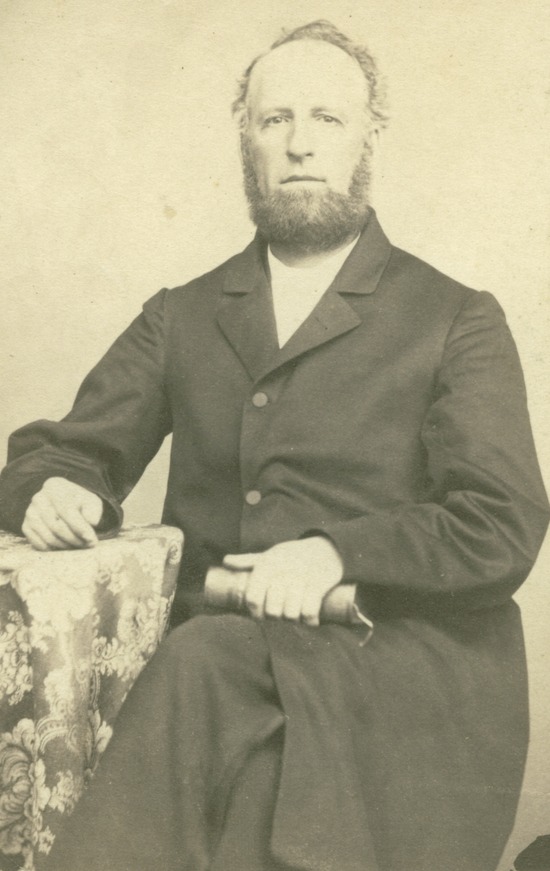
Courtesy of the Ellen G. White Estate, Inc.
The Seventh-day Adventist Church owes the start of its health centers to Ellen White. During her ministry, the Holy Spirit impressed her with messages about healthful living and the need for Christians to be involved in medical ministry. After her husband, James White, had a stroke and spent time in a health center in New York, she realized the Adventist Church needed its own health centers, too. These places would have a revolutionary approach for their time: combining lifestyle adjustments with biblical principles while offering high-quality care.
That was in 1865. By the following year, the Church began the Western Health Reform Institute in Battle Creek, Michigan. Looking back, Ellen White wrote:
“The Lord years ago gave me special light in regard to the establishment of a health institution where the sick could be treated on altogether different lines from those followed in any other institution in the world. It was to be founded and conducted upon Bible principles…and it was to be in His hands one of the most effective agencies for giving light to the world. It was God’s purpose that it should stand forth with scientific ability, with moral and spiritual power, and as a faithful sentinel of reform in all its bearings.”1
These clinics had a greater purpose than humanitarianism. They were to show that God wants human beings to experience good physical health just as much as spiritual health. And they were to share the hope and healing found in Christ.
What health care institutions did Ellen White help start?
Ellen White helped start at least five health centers for the Adventist Church during her lifetime. These include:
- Battle Creek Sanitarium
- St. Helena Sanitarium
- Avondale Health Retreat
- Paradise Valley Sanitarium
- Loma Linda Sanitarium
She gave specific counsel on what these sanitariums should be like:
- They should be small and home-like.
- They should use natural remedies—such as hydrotherapy, diet, and exercise.
- They should educate their patients on the laws of health, a vegetarian diet, and cooking.
- Spiritual talks and free books should be available for the patients to learn about God and the Bible.
- They should offer training for people to become medical missionaries.
This counsel spurred the development of many health centers. But we’ll look at the five Ellen White was directly involved with.
Battle Creek Sanitarium2
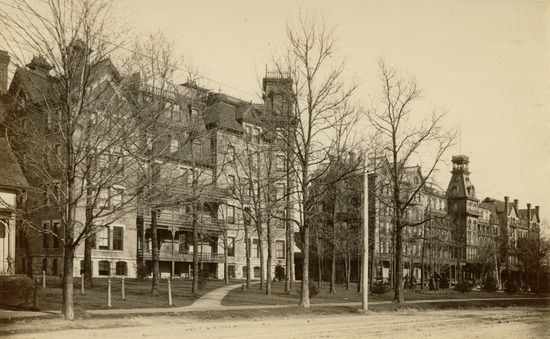
Courtesy of the Ellen G. White Estate, Inc.
God impressed Ellen White that “our people should have an institution of their own, under their own control, for the benefit of the diseased and suffering among us.”3 As a result, the Western Health Reform Institute was born in 1866—the first of many more to follow.
It started with one patient. But after a month, it had reached its capacity of 12.
John Harvey Kellogg, a young man who Ellen and James White sponsored through medical school, became the superintendent of the sanitarium in 1876. Under his leadership, its name became the Battle Creek Medical and Surgical Sanitarium (Battle Creek Sanitarium, or the “San” for short).
As the first Adventist health center, it was the galvanizing force for many more to come.
St. Helena Sanitarium4
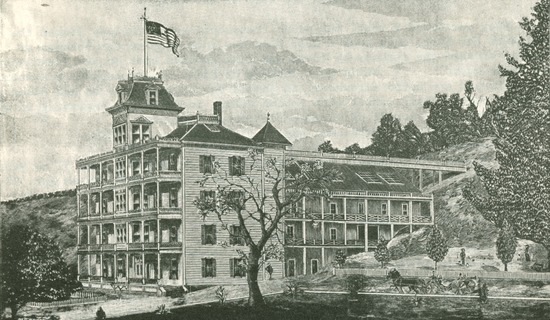
Courtesy of the Ellen G. White Estate, Inc.
In the 1870s, Ellen White urged Adventists to start a sanitarium on the west coast. Her counsel inspired W. A. Pratt to help buy a 10.5-acre property in St. Helena, California, for a sanitarium.
The St. Helena Sanitarium opened in 1878 with Merritt G. Kellogg, half-brother of John Harvey Kellogg, as its first superintendent.
Ellen White lived near this sanitarium in her home at Elmshaven. Its staff cared for her right before she died in 1915.
Today, the institution remains as the St. Helena Hospital—the oldest Adventist hospital in the world.
Avondale Health Retreat5
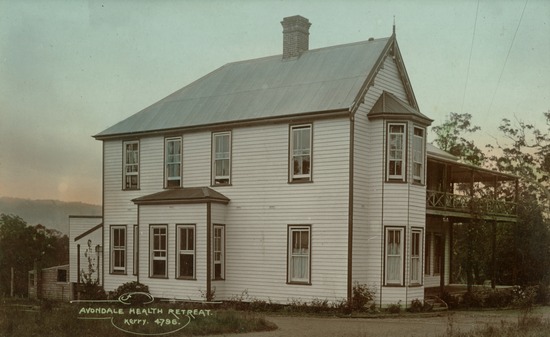
Courtesy of the Ellen G. White Estate, Inc.
The Avondale Health Retreat began in 1899 at Ellen White’s prompting. Why the urgency? There was no Adventist health center in that part of Australia (New South Wales), and the nearest hospital was miles away.6 She wanted Adventists to help the community.
Ellen White played a major role in fundraising and sat on the committee that selected the site—a pleasant country location. The location made it different from a typical hospital, as it was to be a “resting place for the overworked…and the sick.”7
For a time, the center also served as a nursing school before the program moved to Sydney Sanitarium in 1903.
The retreat continued for a while, but eventually, its buildings were used for Avondale College and then demolished in 1935.
Paradise Valley Sanitarium8
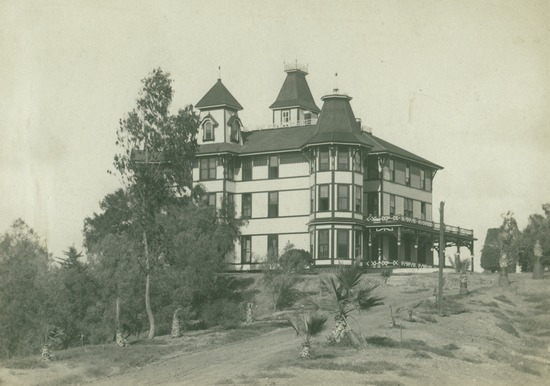
Courtesy of the Ellen G. White Estate, Inc.
In 1905, a Doctor Whitelock discovered a country plot in Paradise, California. He told Ellen White about it. Would it make a good location for a health center?
She thought so! She and a woman named Josephine Gotzian decided to buy the property for that purpose.
But obstacle number one: a drought. Where would they get water? A well would have to be dug.
As the well-digger went deeper and deeper, he didn’t find water. But Ellen White assured him that God had led them to this property. He would provide.
And He did—below 80 feet!
The sanitarium remained privately owned until, in 1912, the Southern California Conference of Adventists took ownership.
In 1962, the Sanitarium became the Paradise Valley Hospital, which continued until it was sold in 2007 and closed in 2008.
Loma Linda Sanitarium9

Courtesy of the Ellen G. White Estate, Inc.
In 1905, God showed Ellen White a property for a sanitarium in southern California.
When she first visited the Loma Linda Sanitarium property, she noted:
“Willie, I have been here before.”
“No, Mother. You have never been here,” he told her.
“Then this is the very place the Lord has shown me, for it is all familiar.”10
She pressed the Southern California Conference of Adventists to purchase the 76-acre property.11 Its fresh air and country environment was ideal for patients to be outdoors and tend gardens.
Both a health center and nursing school were opened on the property. It later expanded to include the College of Medical Evangelists for training physicians.
Today, it operates as Loma Linda University and Medical Center. And today there are many other Adventist institutions like this.
What legacy did Ellen White leave for Adventist healthcare today?
Ellen White left behind a unique philosophy of health reform for Adventists to share with the world. Today, the Adventist health care system carries on this legacy of whole health—treating people as individuals with physical, mental, and spiritual needs. Through its healthcare ethics and practices, its staff aims to live out the healing ministry of Jesus.
The Adventist Church operates 198 hospitals worldwide, plus clinics. Ellen White’s legacy also encouraged Adventists to start private lifestyle centers and do medical missionary work in support of the Church’s mission.
These places are about more than providing basic medical care. Some of these lifestyle centers offer training programs so Adventists can become medical missionaries themselves and serve in their communities or in foreign mission locations.
Here’s a quick overview of Adventist hospitals, clinics, lifestyle centers, and training programs throughout the world.
Loma Linda University Medical Center
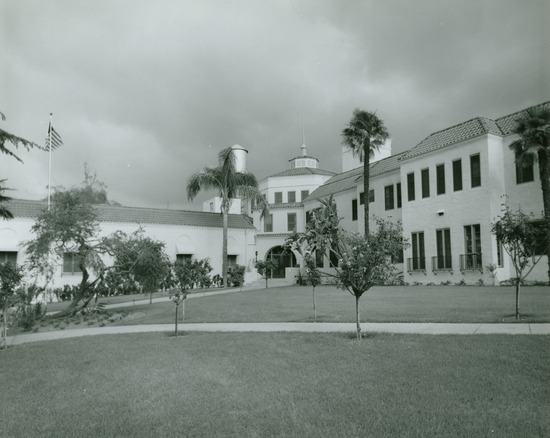
Courtesy of the Ellen G. White Estate, Inc.
Founded in 1905, Loma Linda University Medical Center is a renowned research center, university, and healthcare system. It has six hospitals, plus clinics, that employ 16,000 workers.
Adventist HealthCare
Adventist HealthCare is a system of five hospitals in Maryland’s Montgomery County. It grew from Washington Sanitarium in Takoma Park, Maryland, which was started back in 1907.
Adventist Health
Adventist Health is a network of 18 hospitals across the west coast and Hawaii. Based out of Roseville, California, it began in 1965 and has been acquiring hospitals since then.
One of its most well-known hospitals is the White Memorial Hospital in Los Angeles. It opened in 1913 as a clinic for medical students from the College of Medical Evangelists (present-day Loma Linda University) to work in.
Kettering Health
Kettering Health is a network of 13 hospitals in southwestern Ohio. Adventists started it in 1964 with the support of Eugene and Victoria Kettering.
Eugene’s father, Charles Kettering, was an inventor. In memory of him, Eugene and Victoria wanted to found a hospital with state-of-the-art technology. Though the Ketterings were not Seventh-day Adventists, they resonated with the Adventist philosophy of whole health and asked the Church to start and manage the hospital.12
AdventHealth
AdventHealth is a hospital network based out of Altamonte Springs, Florida. Begun in 1973, it spans 45 hospitals in nine different states.
AdventHealth is known for its CREATION Life program, which promotes Adventist health principles.
Hospitals and clinics worldwide
As a worldwide movement, the Adventist health system extends beyond the United States. Adventist hospitals, clinics, and medical missionaries can be found on every continent (except perhaps Antarctica).
Adventist Health International and Loma Linda have partnered together with Adventist hospitals throughout Africa, Asia, and South and Central America. To see a full list of the hospitals worldwide, visit the Adventist Directory.
Adventist Mission also helps send doctors and nurses to work in smaller clinics and hospitals in more rural regions of the world. Other mission organizations, such as Adventist Frontier Missions, do the same. Whether a doctor in a hospital in Chad or a nurse at front-porch clinics in the jungles of the Philippines, each volunteer shines the love of Jesus through meeting the physical and spiritual needs of their patients.
Lifestyle centers
 Besides hospitals, Adventists have opened private lifestyle centers throughout the world. These centers support the mission of the Adventist Church and provide places for people to learn natural healing methods and simple lifestyle principles.
Besides hospitals, Adventists have opened private lifestyle centers throughout the world. These centers support the mission of the Adventist Church and provide places for people to learn natural healing methods and simple lifestyle principles.
Rather than being massive institutions, they reflect the home-like sanitariums that Ellen White counseled Adventists to start.
Many of them also have short-term training programs to equip people as medical missionaries.
Here are just a few:
- NEWSTART Lifestyle Center in Weimar, California
- Wildwood Lifestyle Center in Wildwood, Georgia
- Hartland Lifestyle Center in Rapidan, Virginia
- Black Hills Health and Education Center in Hermosa, South Dakota
- Aenon Health Care in Malaysia
- Riverview Wellness Center in Zambia
- Country Life in Austria
God’s principles are the foundation of Adventist healthcare
The Adventist health system began with Ellen White’s counsel to exemplify the healing ministry of Jesus.
That aim has not changed. The global Adventist Church continues to follow His example in meeting the needs of individuals and teaching them a healthy way of life.
And all that happened because God inspired the Church to be on the cutting edge of medical care.
To learn more about the Adventist philosophy of health and well-being, check out the eight health principles we promote.
- White, Ellen, Counsels on Health (Pacific Press, Mountain View, CA, 1923) p. 204. [↵]
- Gomide, Jonathan, “Battle Creek Sanitarium,” Encyclopedia of Seventh-day Adventists, Feb. 27, 2022. [↵]
- White, Ellen, Testimonies for the Church, vol. 1 (Pacific Press, Mountain View, CA 1948), p. 492. [↵]
- “St. Helena Sanitarium and Hospital,” Fortin and Moon, The Ellen G. White Encyclopedia. [↵]
- Skryzpaszek, John, “Avondale Health Retreat, Australia (1899–1935),” Encyclopedia of Seventh-day Adventists. Jan. 29, 2020. [↵]
- White, A. L., Ellen G. White: The Australian Years: 1891–1900, vol. 4, (Review and Herald, Hagerstown, MD, 1983), p. 438. [↵]
- See reference 6. [↵]
- “Paradise Valley Sanitarium,” Fortin and Moon, The Ellen G. White Encyclopedia. [↵]
- “Timeline of Our History,” Loma Linda University. [↵]
- White, A. L., Ellen G. White: The Later Elmshaven Years: 1905–1915, vol. 6, (Review and Herald, Hagerstown, MD, 1982), p. 18. [↵]
- Ibid., p. 20. [↵]
- Our Story | Kettering Health; Kettering Health | Seventh-day Adventist Church. [↵]
Related Articles
Questions about Adventists? Ask here!
Find answers to your questions about Seventh-day Adventists
More Answers
The Health Benefits of Fresh Air You Should Know About
The Health Benefits of Fresh Air You Should Know About“When you can’t breathe, nothing else matters,” the American Lung Association tells us. And while that’s true, the kind of air you’re breathing will determine the health benefits you experience. Breathing fresh...
What Do Seventh-day Adventists Choose to Eat?
What Do Seventh-day Adventists Choose to Eat?Food blogs overwhelm the internet; food fads are all the rage; and copycat and healthy versions of food are the subject of many a get-together. Eating—and eating the best way—is a big deal. And everybody has a different...
10 Incredible Ways Sunlight Can Improve Your Health
10 Incredible Ways Sunlight Can Improve Your HealthAre you concerned about sunlight’s negative effects? You might be the one who lathers on the sunscreen and covers up when you go outside. Or maybe you avoid being outside as much as possible. You might be surprised,...
Why Is Water So Important?
Why Is Water So Important?We all know that water is a substance we can’t live without. It quenches our thirst and keeps us hydrated on the inside. And it’s necessary for hygiene and cleansing on the outside too. But did you know that the cleansing properties of water...
Ellen White’s Writings and the Adventist Health Message
Seventh-day Adventists are known for their emphasis on healthy living. And Ellen G. White was a significant influence in the development of this priority and practice among Adventists.
What Did Ellen White Teach about Vegetarianism?
What Did Ellen White Teach about Vegetarianism?One thing you might have heard about Seventh-day Adventists is their emphasis on a vegetarian lifestyle. If you’re wondering why that is, it goes back to our church’s humble beginnings: As Adventists studied the Bible,...
How Ellen White’s Teachings Can Improve Your Health
How Ellen White’s Teachings Can Improve Your Health Healthcare in the nineteenth century was said to leave “more disease than it took away” with its use of bloodletting and “medicines” like mercury and arsenic.1 As people questioned these methods, new approaches...
Change Your Perspective on Life with These 5 Mindsets
5 Biblical Mindsets to Change Your Life for the Better Sometimes, life is just plain hard. There’s no way around it. So would thinking about things differently really change anything? Our perspective on life, and everything it throws at us, affects more than we’re...
Bible Promises for When You’re Worried or Fearful
Bible Promises for When You’re Worried or Fearful The Bible is full of beautiful promises that can comfort us in a variety of situations. They can give us hope when we are hopeless, make us feel grateful for God’s love, and comfort us when we’re grieving or suffering....
12 Practical Ways to Overcome Worry
12 Practical Ways to Overcome Worry DISCLAIMER: This content is for informational purposes only. It does not constitute any professional medical advice and is not intended as a substitute for professional mental health therapy. It’s easy to get stuck in a cycle of...
How the Bible Talks About Worry, Fear, and Anxiety
How the Bible Talks About Worry, Fear, and Anxiety Worry and fear are the ingredients of anxiety. It’s easy to see how the world isn’t perfect—and the anticipation of a bad event or experience (that may or may not even happen) can end up draining the peace and...
How to Calm Anxious Thoughts, Using the Bible
How to Calm Anxious Thoughts, Using the Bible You were expecting a phone call from your daughter half an hour ago, and she still hasn’t called. She’s also not answering your calls. You feel your heart thumping as your thoughts race: What if she’s been in a car...
What You Should Know About the Adventist Health Studies
What You Should Know About the Adventist Health StudiesYou may have heard that Seventh-day Adventists care about health. But what you may not know is that Adventists have been the subjects of long-term research into lifestyle and health. Since 1958, researchers from...
Benefits of Sunlight
Yes, There Are Health Benefits of SunlightDespite the bad reputation it’s gotten, sunlight is generally associated with positivity, as shown by songs like “You Are My Sunshine,” or phrases that refer to delightful people as having a “sunny disposition.” There’s a...
Why Your Body Needs Rest for Optimal Health
Why Your Body Needs Rest for Optimal HealthStruggling to think straight? Wondering why you can’t remember that important tidbit you heard earlier today? Feeling like your emotions are about to explode? These are just some of the symptoms that can reveal your need for...
The Seventh-day Adventist Diet: One of Our Key Longevity Secrets
The Seventh-day Adventist Diet: One of Our Key Longevity SecretsOats, avocados, lentils, tofu—probably not what you first think of in a standard American diet. But if you show up at the home of an Adventist, chances are you may be served one of these staples. Out of a...
Why You Need Fresh Air
Why You Need Fresh Air“When you can’t breathe, nothing else matters,” the American Lung Association tells us. We couldn’t agree more! Breathing in clean air is an essential part of caring for our bodies, which God has given us. Together with other health principles,...
Sabbath Meal
Everything You Need to Know About Sabbath MealsFor Seventh-day Adventists, sharing a Sabbath meal with friends and family is one of the most special and memorable parts of the Sabbath. That’s why we want to share with you all about Sabbath meals and why they’re such a...
Adventists and Healthy Living
Adventists and Healthy LivingWhat’s the Adventist “Health Message” All About? One thing Seventh-day Adventists are known for is their emphasis on living healthy lives. Since our bodies are living temples of the Holy Spirit (1 Corinthians 6:19, 20), we strive to stay...
Water’s Importance—Physical Benefits and Spiritual Applications
Water’s Importance—Physical Benefits and Spiritual Applications We all know that water is a substance we can’t live without. Not only does it quench our thirst and keep us hydrated from the inside, but it’s necessary for hygiene and cleansing on the outside as well....
How Important is a “Day of Rest?”
How Important is a “Day of Rest?” Why God Created a Day for Downtime by Martin Casper Do you ever experience the feeling of complete overload? Do you feel like the only way you can get ahead is by slamming it 24/7? I hear these types of comments more and more...
7 Reasons Why a Day of Rest is Important
7 Reasons Why a Day of Rest is ImportantWe live in a fast-paced world. It seems as if success is measured in how much you can do in a short amount of time. (Extra points for the service or product that is available 24/7). The idea that we will be more successful if we...
How do Adventists choose what to eat?
How do Adventists choose what to eat?Every day, parents go through the ritual of getting their kids to eat what is healthy and good while trying to steer them away from what can hinder the growth of their developing bodies. Nutritionists work with their clients to...
How Can I Have a Better Marriage?
Is it possible to have a happy marriage?
How do Adventists make movie and music choices?
How do Adventists make movie and music choices?Cinema has come a long way since the first clips of motion pictures came to light in 1878. As the decades rolled on, film and music producers have created rivers of movies and albums for the masses. Today, watching movies...
Why are many Adventists Vegetarian?
Why are many Adventists Vegetarian?The diet intended for man is outlined in Genesis 1:29, “And God said, ‘See, I have given you every herb that yields seed which is on the face of all the earth, and every tree whose fruit yields seed; to you it shall be for food.’”...
Didn’t find your answer? Ask us!
We understand your concern of having questions but not knowing who to ask—we’ve felt it ourselves. When you’re ready to learn more about Adventists, send us a question! We know a thing or two about Adventists.






















